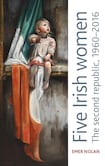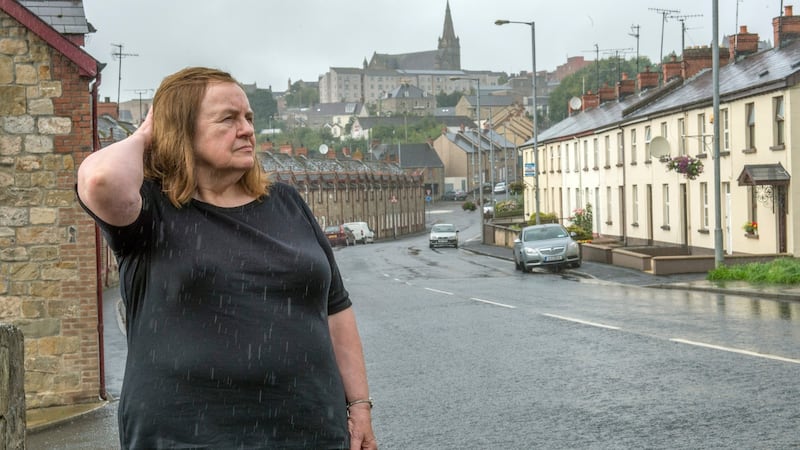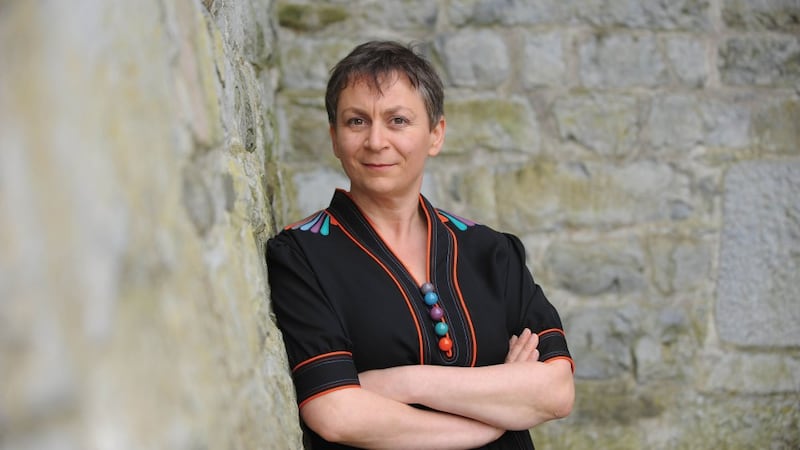
Emer Nolan, author of the very useful Joyce and Nationalism, has chosen to reflect on five interesting Irishwomen who came to prominence in the second half of the 20th century. They are Edna O’Brien, Bernadette McAliskey, Nuala O’Faolain, Sinead O’Connor and Anne Enright.
She had plenty to choose from - the second wave of Irish feminism in the 1960s and 70s made life and self-expression much easier for women. These choices represent women who made a considerable impact in their fields of literature, journalism, music and politics, and who exemplified different and evolving versions of feminism. None of them relied on a more famous male spouse or father and all of them achieved international as well as national recognition.
Nolan makes clear in her introduction that she is interested in their relationship with “Irishness”, and indeed this is a fruitful line of inquiry. In a rapidly changing country, what does being Irish mean to women who are alert to their own oppression and are actively involved in opposing it? As Nolan demonstrates, it means very different things to each of these women.
She clearly loves O'Connor as a singer, and provides fascinating observations on the tension between the ethereal and the visceral in her voice
Edna O’Brien, the first iconic Irish Woman Author, arguably suffered more than the others from Catholic Ireland’s 1960s attitudes towards women, having transgressed its strictures with novels which dealt more openly than hitherto with women’s sexuality, and having taken herself off to England, compounding the felony. Nolan explores her continuing fascination with Ireland, as the psychic space from which she drew her creativity as well as the place which both rejected and fetishised her. Her superstardom, helped by her beauty, was both a blessing and a curse, as was her obsession with romantic love as the solution to women’s fulfilment.
Sinead O’Connor, whose extraordinary voice and fragile skinhead beauty made her a worldwide icon, moves Nolan to some excellent writing on her music; she clearly loves O’Connor as a singer, and provides fascinating observations on the tension between the ethereal and the visceral in her voice. There is a virtuoso account of O’Connor’s versions of Paddy’s Lament and The Foggy Dew, both iconic Irish ballads, one dealing with emigration’s disappointments and the other with the 1916 Rising. O’Connor’s restless relationships with nationality and sexuality are explored, Nolan pointing out that she has dealt with “an extremely difficult private life in public, drawing attention to female sexuality in its emotional and reproductive complexities rather than its in its commodified forms and retaining a stubborn attachment to an Irish identity that is often perilously close to stereotype.”

Bernadette Devlin McAliskey is the only politician in the book, and she is an outlier. There has been nothing like her since in the North, and indeed her prominence in the late 1960s owed more to the liberated attitudes of the student movement from which she came than to any political party. Nolan presents her as an Antigone figure, someone with “mythological pedigree” using her fierce thirst for justice and accomplished rhetoric to confront the wrongs she perceives in her society. Alone among the women in the book, she is a socialist, a position from which she does not waver and which matters to her as much as feminism and nationalism.
Anne Enright, by far the most 'modern' of these five women, comes in for some criticism from Nolan for her lack of attention to the Northern and earlier Irish conflicts
Nuala O’Faolain gets quoted more than any of the others; her prose was and remains incredibly fresh, because she was always curious and often surprised, and she was able to share these qualities with her readers. Are You Somebody, her accidental memoir, made her famous here and abroad relatively late in her career, and paved the way for the kind of confessional memoir which has become very popular. She was already, in her own words “that specially unloved thing in a misogynistic society, a middle-aged woman with opinions”, but the memoir’s frankness and candour made her beloved and elicited a huge response from readers, as did her heart-breaking interview with Marian Finucane just after she got a diagnosis of terminal cancer. Nolan looks at her self-described “intemperate love for the fabric of Ireland”, and her late acknowledgment that the male culture in which she operated as a young journalist was, although convivial and entertaining, essentially inhospitable to women.

Anne Enright, by far the most “modern” of these five women, comes in for some criticism from Nolan for her lack of attention to the Northern and earlier Irish conflicts; it’s a strangely prescriptive position coming at the end of a stimulating book. Her other choices had or have various interests in the “national story”. Why not treat Enright as just as important for her lack of interest (like a whole generation of young Irish writers now)? Surely there is not a list of sanctioned subjects which must be covered by artists to earn approval?
Overall, this is a well-written, clever, very useful book which will add to our knowledge of later 20th-century feminism, politics, Irishness and its meanings, and the results of freedoms achieved and exploited by a cohort of outstanding Irish women. As usual, Manchester University Press is charging far too much for a book that cannot be afforded by many who would like to read it.










